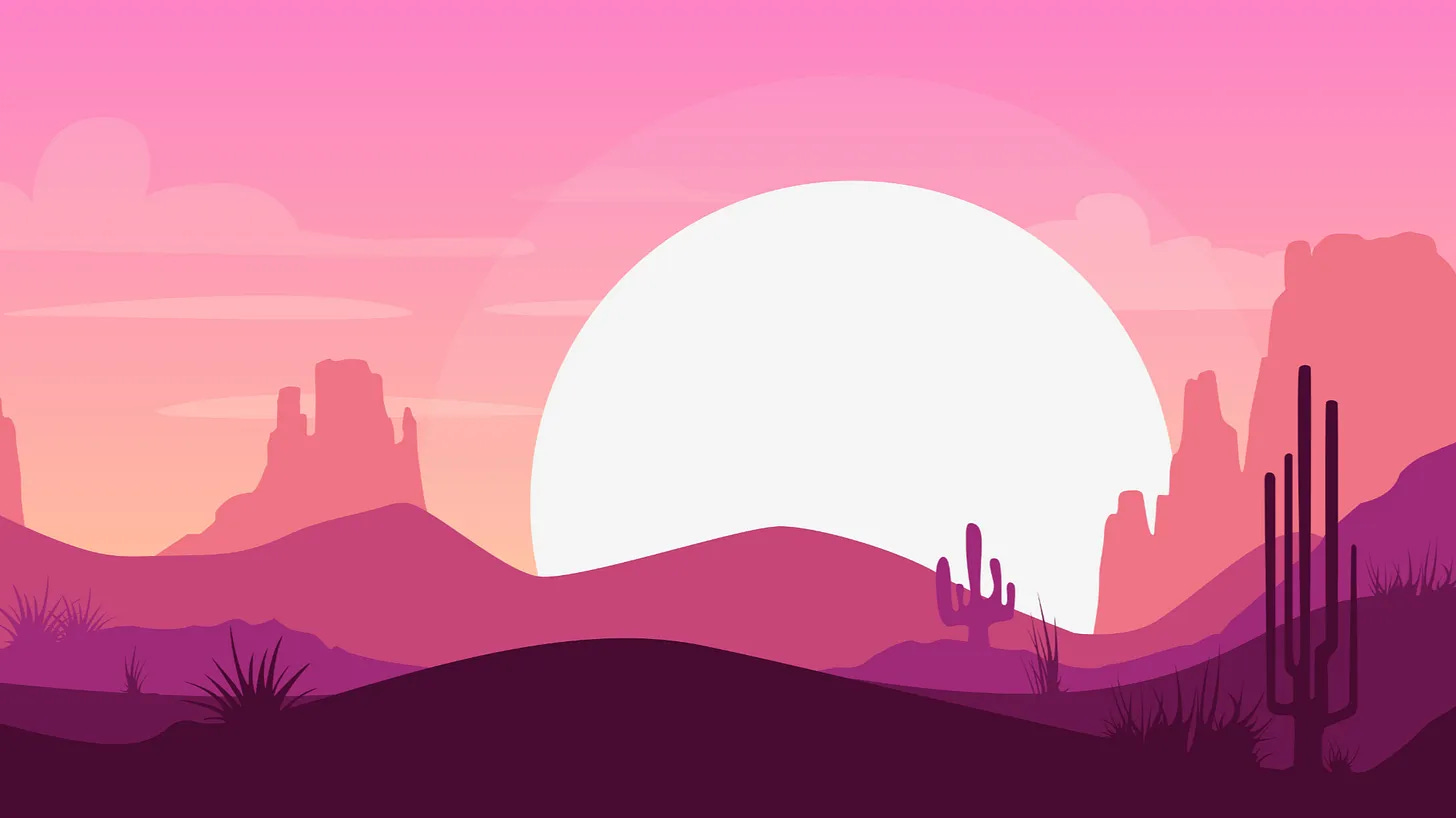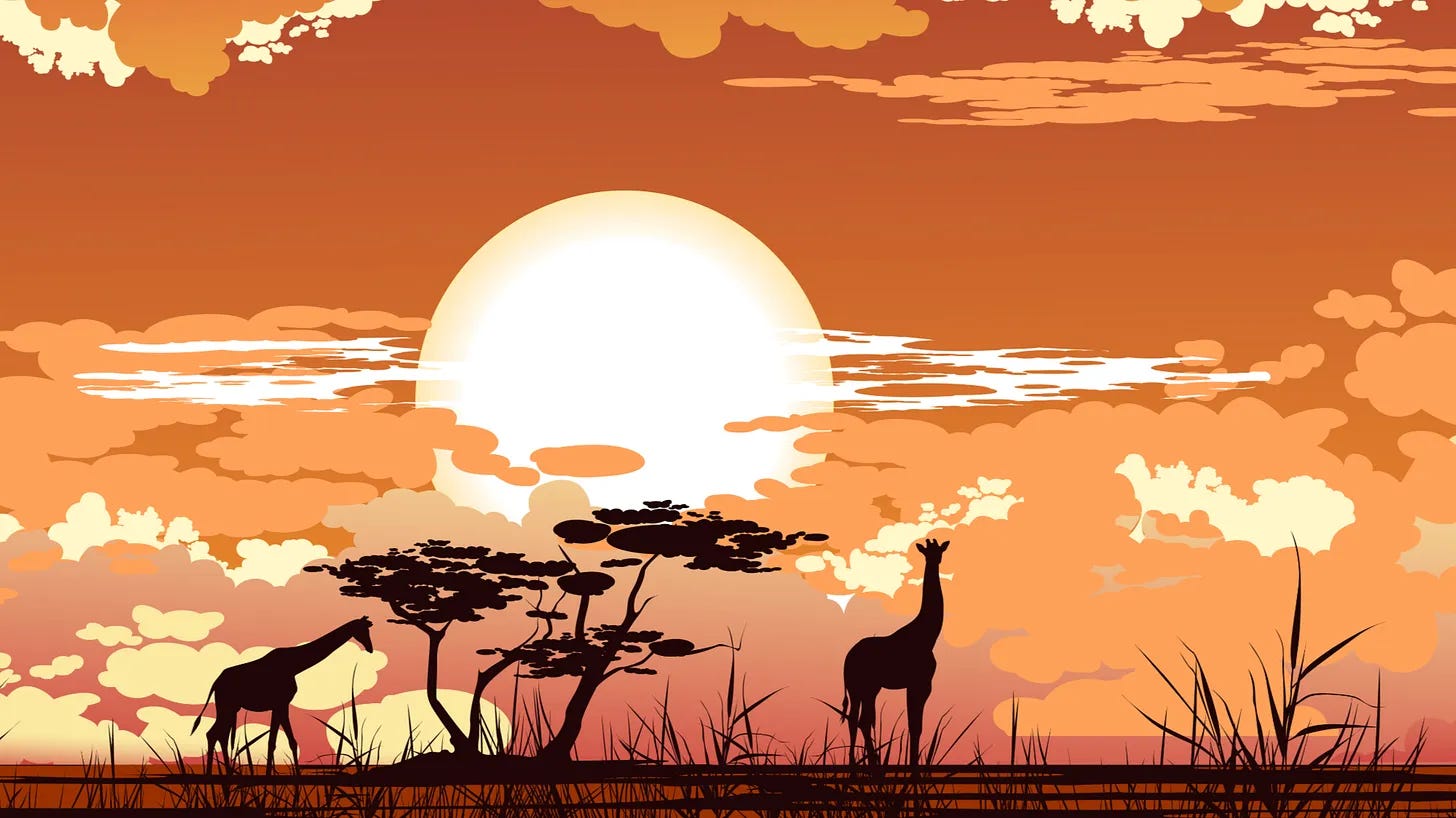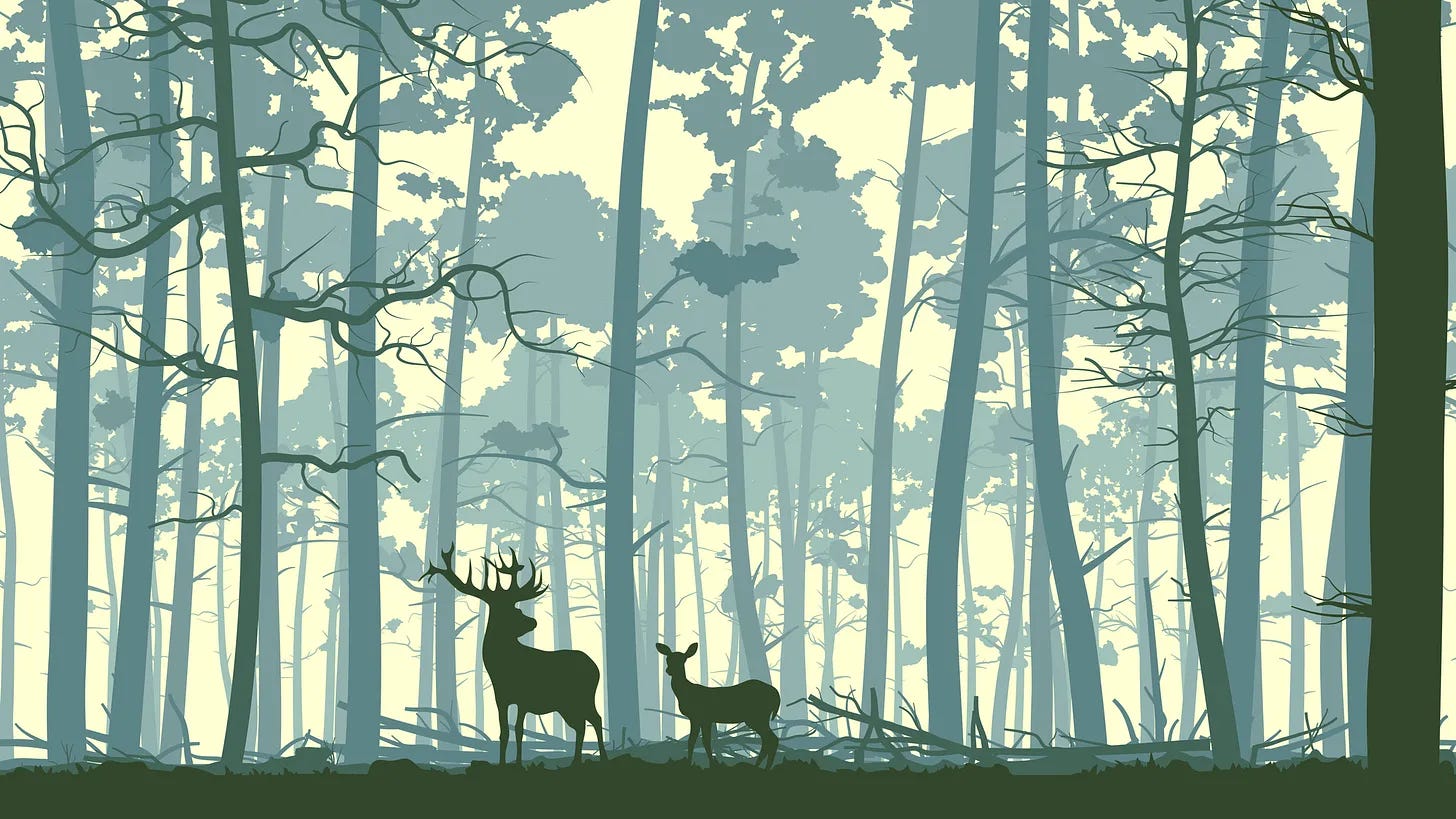Maximizing Substack for each ecosystem
Substack can work for any ecosystem, but they will each find different advantages and challenges from the platform. Here, we lay it all bare.
If you haven’t had a chance to take our quiz yet, I highly recommend taking it before you read this article. Additionally, if you haven’t taken a look at our membership options, I think they are pretty neat.
Most authors I talk with ask some form of the question “how did you succeed on Substack?” Or course, what they really mean is “How can I succeed at Substack?”
While I can’t give you personalized advice, because this is a pre-written column and you are a living, breathing human reading this asynchronously, the next best thing is to show you how each ecosystem can best utilize Substack to grow their own author career.
I have spent hundreds of hours on Substack trying to learn everything I could about the platform. Meanwhile, we’ve talked to hundreds of authors about their ecosystems. Together, I’ve molded those two conversations to create an overview of how I think each ecosystem can utilize Substack.
One thing I will say is that if you’re looking for fiction, there are roughly 300 fiction publications that write fiction. I have a ton of fiction available in my publication, but there is not the same amount of fiction as there is in nonfiction. Luckily, the fiction community here is hugely supportive and they are great about supporting each other.
However, if you are specifically looking for a deep well of fiction readers/authors to mine immediately, you will likely be disappointed. If you’re looking for a supportive, growing community, then you’re in the right place. Fiction is in its infancy here, but I think it will grow into something magical with time and support.
Desert
Advantages: The secret power of a Desert is optimization. Deserts can look at a newsfeed and understand the underlying code powering it. If you’ve ever seen people talk about “gaming the system” that’s probably a Desert. They love finding ways to “win the conversation”.
When you start looking at Notes, the first thing a Desert will realize is that the algorithm powering Substack is very basic. It’s not quite Facebook circa 2004, but it does absolutely remind me of 2010-2012 Facebook, and a lot of the strategies that no longer work on other platforms still work here.
For instance, while the feed is not chronological, every time your post is commented on, you’ll be boosted to the top of people’s feeds. Additionally, commenting on other people’s posts helps you be seen by more people as well because the last comment is shown to people scrolling. If you can make charming and well-thought-out comments, you will start to see your subscriber count going up.
On top of that, attending events like Substack Office Hours and engaging in the conversation can lead to significant growth in your publication, especially if you are in a popular niche like self-help, psychology, food, or author services.
Challenges: Growth on Substack is slow. Deserts often bore of platforms where they can’t see exponential growth quickly and Substack is a very small platform compared to Tiktok, Amazon, Facebook, Instagram, etc. The strength of a Desert is being able to plug into the “winning” conversation and ride those gains to success fast. Then, they find a new trend and ride that, building momentum by finding that wave consistently.
There is absolutely a prevailing narrative on Substack, but while a bigger platform will have a dozen or more conversations happening at one time between millions of people, Substack usually has 1-2 between thousands, so you’ll have to plant more in one of a couple of categories to have fast growth.
Additionally, Substack rewards subject expertise. Deserts are incredible at writing on any subject as long as it's popular. They take joy in the writing work as much as, or more than, the topic. While Substack certainly has “general” Substack publications that deal with a lot of topics, they generally have a theme or tone that unites them. For a Desert who’s used to donning a hundred personalities depending on the job, it can feel limiting.
Grassland
Advantages: Substack is tailor-made for Grasslands, who are built for depth. Substack rewards subject expertise and extensive knowledge of a topic, which is exactly how Grasslands “win” the marketing game. Readers are more than happy to geek out on a topic with you all day every day for years.
Additionally, Substack rewards “putting pennies in the bank” by slowly building your platform over time. There are multiple articles about Substack success that started with somebody investing in their publication for years and slowly building over time until they started to see exponential growth almost overnight.
While this might seem like a nightmare scenario for other ecosystems, it’s often how Grasslands prefer to exist. They have no problem talking about a trend they spot for years before they reap the rewards when people finally catch up to them.
Additionally, one of the best growth strategies on Substack is to incorporate ongoing conversations into articles while still keeping them on-topic, which is something Grasslands have the preternatural ability to do naturally.
Challenges: Substack is great for depth, but there is also an ongoing conversation happening through Notes and events like Office Hours. The biggest challenge for Grasslands is the inability or unwillingness to join that ongoing conversation. Most Grasslands came to Substack in order to write long and nerd out about their topic, but they miss plugging into the conversation to help improve the timeliness of their writing.
Many Grasslands are so busy going deep on a topic that they miss the ability to influence that ongoing conversation. While the conversation on Notes might not always be about your topic, that’s no reason to avoid trying to influence it. I pick up subscribers every day by communicating with them on Notes, Plus, often the posts I make on Notes become the seeds of future articles.
I do work in the author growth space, though, so often by simply existing in this space I can find new subscribers, but that only worked because I embraced my inner Grassland and found a topic with a lot of depth that I thought would be of interest to the Substack audience for a long time.
Don’t forget, any social media platform is best utilized by finding the intersectionality between your interests and how the conversation works on the platform already. If you can plug into that conversation by harnessing your inner Desert, then your natural strengths as a Grassland will help you carry the day.
Tundra
Advantages: Tundras can harness excitement and stack tropes on top of each other like no other ecosystem, and that works really well on Substack. The conversation on Substack is often cyclical, so if you can harness your inner Grassland and write evergreen articles about those topics, you will be able to bring people into your ecosystem while their excitement is at its highest.
You have to be careful not to sound like a broken record pitching the same thing over and over, but as long as you infuse everything with excitement, you should be able to keep your content fresh.
Tundras love figuring out how to position their work in the market, and it was easy to distinguish myself from other publications by the sheer length and depth of my articles (they tend to be 5,000+ words). I try to stack 2-3 popular evergreen tropes into each article so that as many people can get value from a single piece of content as possible.
My promotion strategy looks a lot like a mini-version of the rolling waves I usually talk about which are ideal for a Tundra. Every article releases on Wednesday, and I crescendo my marketing then. I have also found a lot of value in creating a weekly roundup with dozens of other articles I loved to help harness other people’s excitement to help drive marketing for my own articles.
Challenges: Subscriptions never end…like ever. Tundras are used to building excitement for something and then moving on to the next thing, but with Substack, they have to keep going constantly. There is always another article due to satisfy the readers, and it’s a big shock to the system.
As such, I’ve had to learn to conserve my energy more because Substack is a marathon, not a sprint. Instead of building up huge excitement for every launch, I’ve had to find more sustainable ways of doing less, while maintaining the same cadence of my ideal launch cycle.
Additionally, Tundras must remember to reference their vault of information as they continue through their Substack journey. We live to launch and move on, but Substack is about referencing and re-referencing your work forever. I found that using sections to help build a big vault of content helps keep continued momentum without needing to constantly be building that excitement every day of my life.
Mostly, you really do have to harness your inner Grassland and become much better at “putting pennies in the bank” in order to maximize your success with Substack. Likely, you will also get a lot of value from doing PBS-style pledge drives a few things a year to focus attention on Substack to harness than excitement, which would be a launch strategy uniquely suited to Tundras.
Forest
Advantages: Substack is all about community, and Forests thrive in those settings. Since Substack is essentially a membership community, Forests should feel right at home with things like Recommendations and using sections to increase value to paid members.
Additionally, the Substack community is very interested in reading publications with unique voices, which is where Forests shine. The more unique you can make your articles, the better chance you have for success. This is a huge boon for Forests, who win at marketing by embracing their inner weirdo.
Forests are also very concerned with improving the human experience for others, which fits in very well with the ethos of Notes and events like Office Hours. The more “love” you can shower to connect with people on an individual level, the more success you will have, and that’s one of a Forest’s biggest strengths.
Challenges: Forests have a hard time writing anything that is not 100% aligned with their inner north star. They are the opposite of Deserts in that respect, but part of succeeding on Substack is being part of the ongoing narrative on the platform.
The more you can merge your own north star with what’s happening in the overall conversation happening on the platform, the quicker you will have success.
Forests have a hard time building momentum anywhere because their interests are wide-ranging and disparate, but if you can do the branding work early and somehow find a way to connect everything together, even in a tenuous way, you’ll have more success.
Communities are all about in-jokes and mutually agreed-on norms, but it’s important to remember while those things are incredible when you’re “in on the joke”, they can be intimidating to outsiders. Forests have problems when they fail to look outside their group and be inviting to others, so make sure to be as welcoming to those outside of your community as those inside of it.
One of the major reasons to be on Substack is for the organic growth you get through their recommendation engine and network effects. Make sure to use them effectively to scale. Otherwise, you might find more success on Patreon, which was designed to shower love on people already in on the joke.
Aquatic
Advantages: Aquatics want to do all the things all the time, and Substack has lots of formats to play with, including their own podcasting system. They allow you to set up sections to silo off different projects from each other and play with transmedia across audio, video, photography, art, comics, and text.
There are tons of different subcommunities on Substack that you can use to build your publication. You can create a photography project for #photostack, a film for #filmstack, a comic for #comicstack, a choose-your-own-adventure for #gamestack, and just keep creating new ways to bring people into your universe. None of these niches are particularly huge, but together they can add up to a powerful audience.
You can also use the hunger for new content in these smaller audiences to help build excitement for your projects with a lot of organic reach. Then, when they’re inside your universe, they will find how many other amazing formats and projects they can sink their teeth into in order to fall deeper in love with your brand.
Challenges: Substack only allows one price point for subscriptions, but Aquatics generally have multiple formats that require different price points, so it will be hard to find one price point to service their whole audience. One thing they can think about is using their Founding member tier for their more resource-intensive formats. Or, they can simply price their whole publication at a higher level ($20+) than would be normal with other ecosystems ($5-$10/mo is the norm).
Additionally, while there are different niches within Substack, Aquatics might not be able to enter into the main conversation often enough to scale fast. With a platform like Reddit or Facebook, even the small niches are huge, but with Substack, there are generally only 1-2 main conversations happening at the same time.
Hopefully, you already have a ton of different formats to play with before entering the Substack ecosystem, because it would take a ton of paid members in order to scale beyond the written word without also utilizing something like Kickstarter or Patreon to fill out your ecosystem. However, if you want to find a place to create one monster audience from a bunch of formats, then Substack could work great for you.
Final thoughts
Substack can work for any ecosystem, but it works even better if you can harness a little bit of every ecosystem. If you can mine the conversations to stay on top of the reader’s mind like a Desert while also harnessing your inner Grassland to go deep on a niche, you will have a powerful combination for success. If you can additionally stack evergreen topics and harness excitement like a Tundra while building a community like a Forest and expanding out to different formats like an Aquatic, you’ll do even better. It’s a bit like Voltron. Those kitties are powerful alone, but together they are unstoppable.
There is a ton of good on Substack, but it’s not a platform you’ll start tomorrow and have hundreds of paid members next week. I brought 25,000 emails (currently culled down to 18,000) and I don’t have 100 paying members yet. I’ve been pushing hard on Substack since April, and while we’ve made tens of thousands of dollars on other platforms this year, my gross annual revenue is tracking below $4,000 on Substack.
I see the long-term value in Substack, so I’m happy to build for the future, but it is very much a “be kind to future Russell” scenario. Still, I’ve tried dozens of membership communities, and this is the only time I’ve actually gotten any form of traction. Add on the fact that I gain between 500-600 organic subscribers a month through network effects and recommendations alone with no financial investment and it makes a powerful case for me to spend a lot of time here.
However, the more flexible you can be, the more successful you will be here, and the quicker you will attain that success. That said, you can be very successful doubling down on any ecosystem if you give yourself time to build your publication.
If you haven’t had a chance to take our quiz yet, I highly recommend taking it before you read this article. Additionally, if you haven’t taken a look at our membership options, I think they are pretty neat.










I am enamored to think there are only 300 fiction Substacks at this time out of thousands of writers. I will absolutely consider myself a pioneer and try not to get dysentery along the journey.
Thank you for sharing your experiences @russellnohelty - I will be revisiting the fiction list like an ant to a sidewalk graham cracker.
The quiz says I'm a Forest. I wasn't sure about that until I read this part: "Forests have a hard time writing anything that is not 100% aligned with their inner north star. "
Sounds correct. Guess I need to embrace my inner weirdo more.